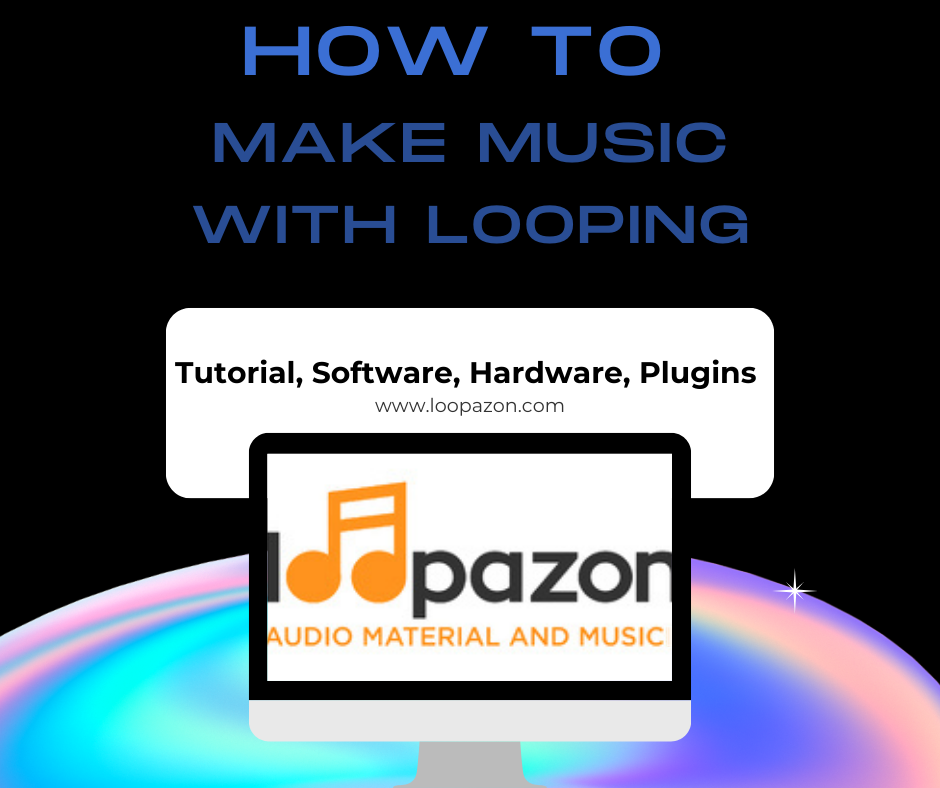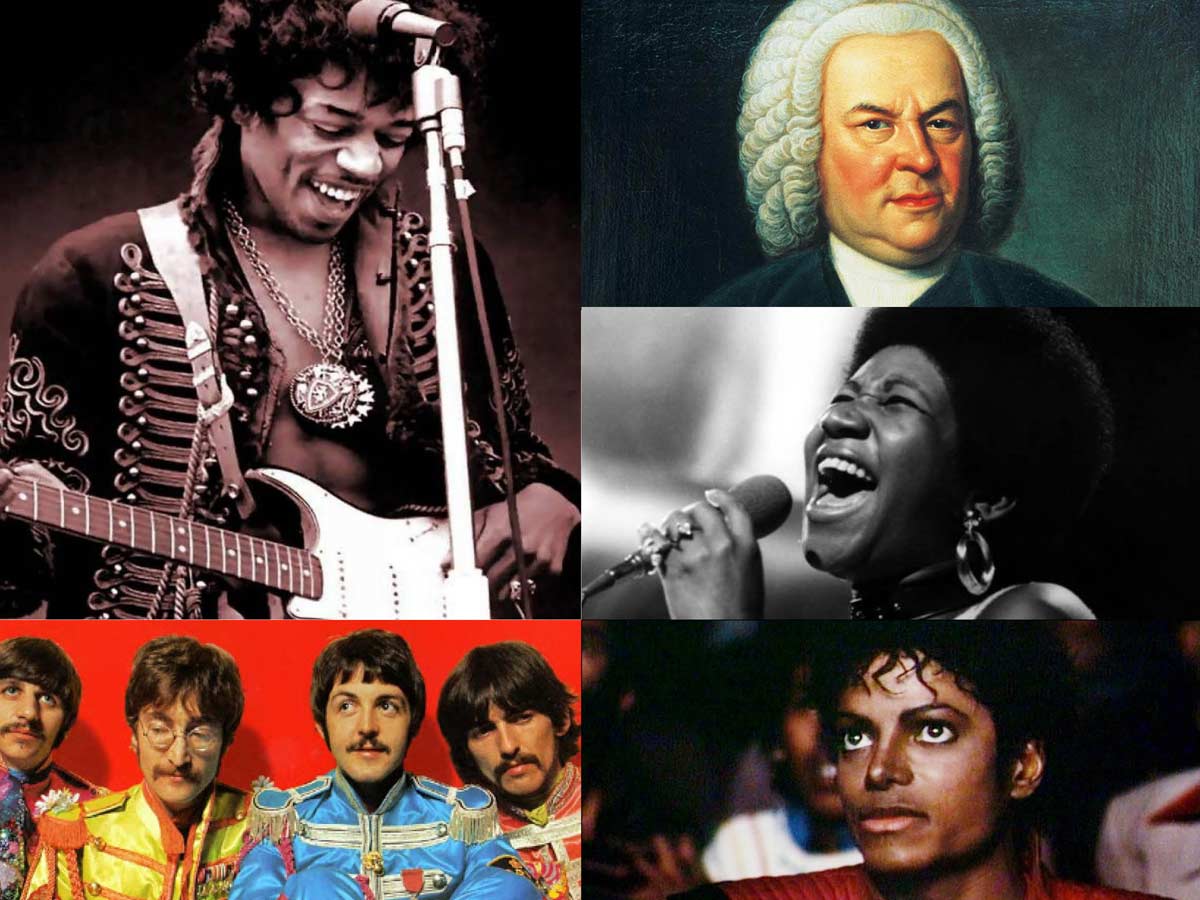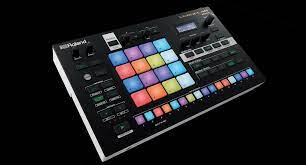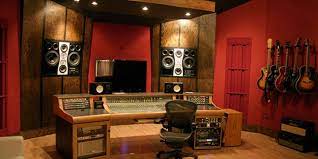All About Making Music With Looping Software
Form a band online, promote your music, buy custom beats, sound parts, and share your Beat or Track as a Royalty Free loop with us. Collaborate to make beats online with the best loop makers from around the world on the Forum for musicians and beat makers. Keep up to date with Music News and learn from FL Studio Video Tutorials and the articles on the Blog. Free DAW Music Software downloads, VST and Instrument Packs for FL Studio, Pro Tools, Logic, Ableton, and how to use the most popular free DAW Software, Fruity Loop Plugins, MIDIs and more.

What Is Music Looping?
Music looping is a creative technique used by musicians to craft unique compositions or build entire songs from scratch in real-time. It involves recording, repeating and layering sounds or musical phrases until the desired soundscape is achieved. With such flexibility and power at your disposal, it's no wonder why looping has become an integral part of modern music production and performance. Whether you’re looking to add depth and complexity to your recordings or create unique musical experiences on stage, understanding how to use looper devices and software plugins will help you unlock your full creative potential as a musician.
Looping is a powerful technique that can help you create unique and interesting sounds in your music. With looping, you can record short snippets of sound and repeat them over and over to form an entirely new musical phrase or texture. This process allows you to layer multiple samples together, creating complex layers of sound with minimal effort. Looping has been used for decades by DJs, producers, and musicians alike as a way to add depth and complexity to their songs. Today, looping is achieved through the use of hardware devices such as drum machines or pedal boards, or with software plugins like Ableton Live's looper function. No matter what method you choose, looping can be an invaluable tool in your creative arsenal when it comes to making music.
In the studio, looping allows producers to layer multiple samples together, creating rich soundscapes with minimal effort. On stage, loopers are often used by musicians to create complex textures or build entire songs from scratch in real-time. With such flexibility and power at your disposal, it's no wonder why looping has become an integral part of modern music production and performance. Whether you're looking to add depth and complexity to your recordings or craft unique musical experiences on stage, learning how to use looper devices and software plugins will help you unlock your full creative potential as a musician.
Creating loops is an essential skill for any musician or producer. It can be used for production purposes and live performance settings alike, so it pays to understand the fundamentals of how to create them. To do this effectively, one must begin with an end goal in mind and use metronomes or click tracks to ensure accuracy. This helps keep all elements in sync while creating the desired soundscape. Metronomes are also useful when practicing scales and other musical exercises as they help build a sense of rhythm and timing which is essential when playing with others or layering multiple parts together. By using metronomes or click tracks during loop creation, musicians can craft intricate sounds that will stand out from the crowd.

History Of Looping In Music
Looping has been an integral part of music production for decades, and its popularity has only grown over time. In the 1960s, iconic musicians like Jimi Hendrix and The Beatles incorporated looping into their recordings to create innovative sounds. Similarly, pioneering electroacoustic musicians in the 1940s used looping techniques to craft unique compositions unlike anything heard before. Today, modern producers use digital tools such as drum machines or software plugins to achieve results that would have been unimaginable just a few years ago – all thanks to the power of looping.
The use of samples and loops in making beats and music has been around for decades, but its popularity has grown exponentially over the last few years. From iconic musicians like Jimi Hendrix to pioneering electroacoustic composers in the 1940s, looping techniques have been used to create innovative sounds that were unheard of before. Today, digital tools such as drum machines or software plugins make it easier than ever to craft complex compositions with minimal effort . Whether you're looking for a creative edge in your recordings or want to build entire songs from scratch on stage, learning how to use sampling and looping devices can help you unlock your full potential as a musician.
Uses Of Music Looping
Looping is a powerful tool that has been used by musicians, DJs and producers alike for decades to add depth and complexity to their music. Whether you’re looking for an edge in your recordings or want to create unique musical experiences on stage, looping can help you unlock your full creative potential as a musician. In the studio, looping allows producers to layer multiple samples together with minimal effort while live performers use it to craft complex textures and build entire songs from scratch in real-time. With such flexibility at your disposal, learning how to properly use looper devices and software plugins could be the key ingredient that takes your music production or performance skills up a notch.
Music production with loops requires a certain level of skill and knowledge to create the desired soundscape. To achieve this, it’s important to begin with an end goal in mind and use metronomes or click tracks to ensure accuracy. This helps keep all elements in sync while creating the desired musical composition. Additionally, looping allows producers to layer multiple samples together quickly and easily, making it an invaluable tool for music production in both studio settings as well as live performance scenarios.
Music samples and loops have been an essential part of music production for decades, allowing producers to craft intricate sounds that stand out from the crowd. From iconic musicians like Jimi Hendrix to modern day producers using digital tools such as drum machines or software plugins, sampling and looping has become increasingly popular over time. By understanding how to properly use these devices and software plugins, one can unlock their full creative potential as a musician – whether they’re looking to add depth and complexity in recordings or create unique musical experiences on stage.

Types of Looping Technology
Looping Hardware And Software
The most common type of looping technology is hardware devices or pedals. These are great options if you are looking for something portable and cost-effective. However, they can be limited to what types of sounds can be produced and can take up valuable space on your pedalboard. Another option is software plugins which allow you to create loops on your computer or mobile device. This provides more flexibility in terms of sound design but may not work as well in a live setting due to latency issues. Examples of popular products include the Boss RC-30 Loop Station, Native Instruments’ Traktor Pro 3 software, or Ableton Live 10 Suite for Mac/PC computers.
Looping has become an essential part of modern music production, allowing artists to create complex and dynamic sounds from a single source. It has been around for decades but with the introduction of powerful digital tools and hardware devices, looping technology is now more accessible than ever before. Musicians can choose between using looping hardware or software in their creative process to craft unique musical compositions. Looping hardware typically consists of pedals or other physical devices that are designed for live performance while looping software provides more flexibility in terms of sound design when used on computers or mobile devices. Both types offer tremendous potential to musicians looking to expand their sonic palette and explore new ways of creating music.
Looping Software
When comparing hardware versus music software devices, it really depends on what type of setup you have and what kind of music you intend to create. Both have their pros and cons but ultimately it comes down to personal preference and budget constraints. For example, hardware devices tend to be easier to set up than software plugins but may not offer as much customization when creating sounds. On the other hand, software plugins provide more control over sounds but require more technical knowledge to set up properly.
The popularity of looping technology has exploded in the past few decades, due largely to its With so many powerful tools at their disposal, artists can easily craft dynamic soundscapes that defy traditional song structures and push boundaries beyond what is possible with instruments alone. Whether you’re looking for a way to spice up your production or want to explore new possibilities in terms of sound design, looping technology provides endless possibilities.
FL Studio is one of the most popular music production software programs on the market. It offers a range of features that allow users to create complex and dynamic music loops with ease. With its intuitive interface, powerful sound design capabilities and extensive library of plugins, FL Studio provides an ideal platform for producers who want to take their creativity to the next level. From drum machines and samplers to effect and instrument looping software, FL Studio makes it easy for artists to craft unique compositions using loops and samples you can find on Loopazon. Whether you’re looking for something simple or more advanced, there are plenty of plugins available that will help you make amazing beats with FL Studio and other popular DAWs.
No matter which type of looping technology you choose to use, it is important to understand the basics and practice regularly. This will help ensure that you are able to take full advantage of the features available and create stunning music loops with ease. With the right gear and some creativity, you can make amazing beats with music samples and become a master looper in no time!
Looping Hardware
Making beats with music samples is a popular and creative way to produce unique compositions. With the right hardware devices, you can easily sample sounds from any genre of music to create your own beats. There are many pieces of equipment that make it easy for producers to manipulate samples in real-time or even record them directly into their projects. Popular options include drum machines, samplers, loopers, and MIDI controllers which allow users to mix and match different elements of sound together until they have created something entirely new. Whether you’re looking for an all-in-one solution or want to build out a more complex setup with multiple components, there are plenty of hardware devices available that can help you make amazing beats with music samples.
Loopers are immensely helpful devices used to create layered sounds and effects. Hardware loopers come in two forms: pedal uppers that provide amp-like settings for live performances, and machine loopers for recording use. Meanwhile, the software alternative provides a more diverse range of options, since it comes as downloadable plugins compatible with Windows, macOS, and mobile platforms. This allows users to take advantage of greater sound-shaping capabilities and a larger storage capacity than hardware loopers typically possess.
For those looking for an all-in-one solution, hardware loopers are a great choice. These devices usually come pre-loaded with various effects and settings, allowing users to craft complex soundscapes with minimal effort. Additionally, they often feature multiple inputs, allowing you to connect instruments such as guitars or keyboards and record several different tracks at once.
Although machine loopers may not offer the same amount of versatility as their software counterparts, the convenience of having your own dedicated device is hard to beat. In addition to being fast and easy to use, these devices provide enough settings and sound shaping capabilities that any user can find something that suits their needs. For musicians who want extra control over their loops or just prefer the tactile experience of a hardware device, machine loopers are a great choice.
At the end of the day, there is no single “best” option for looping technology – it all depends on what you want to accomplish with your music. Choosing between software and hardware will depend on how much control you need and how comfortable you are with using various technologies. If you’re looking for an easy solution or don’t have much experience in sound design, hardware loopers can be a great way to get started. If, however, you require more advanced features and want greater flexibility in terms of customization and sound shaping capabilities, then software plugins may be the better choice. Regardless of which path you choose, looping technology can open up a world of possibilities for musicians of all levels.
In conclusion, looping technology is an incredibly powerful tool that can be used to create unique and expressive music. From drum machines and samplers to effect processors and instruments, looping technology has revolutionized the way people make music today. Whether you’re looking for something simple or more complex, there are plenty of options available that will suit your needs. With a bit of practice and creative thinking, even novice producers can begin producing quality loops with ease.
Music Looping
Looping is an incredibly powerful tool for both live performance and production settings – it allows musicians to create complex arrangements with just one instrument or voice! With so many technologies available these days – from hardware devices such as pedals to software plugins – anyone can find their perfect setup regardless of budget constraints or technical know-how. All it takes is some patience and practice before you master the art of looping! Whether you are just starting out or already have experience with creating loops, following these tips should help get you started on your journey towards becoming a master looper!
Looping is a music production technique that provides music producers and performers with greater flexibility and creativity when creating music. By utilizing devices, pedals or plugins, music loops are used to repeat part of a song over the course of a performance or create sections that can help fill-in any holes in an arrangement. Professional music producers have been taking advantage of looping for years in order to enhance their music with fresh new layers and beats that could not have possibly been created in just one take. This technique has revolutionized the way music is produced today, and will become even more essential as music production trends continue to evolve.
Looping has been used by musicians since the 1940s and popularized by icons such as Jimi Hendrix and The Beatles during the 1960s. Electroacoustic music pioneers discovered the use of looping to store sound on hardware that may not seem up-to-date today, but was incredibly progressive for their time. Loop pedals provided audio engineers with an outlet for creativity and expression, leading to innovative sounds and techniques across different genres. The possibilities are nearly endless with looping, allowing musicians to explore new depths of sound. Learn how to make music using loops with the Loopazon Video Tutorials, great for beginners and professionals!
Electronic Music Production
Electronic music production is an incredibly powerful and versatile tool for creating professional-sounding tracks. Not only can it be used for production purposes, such as composing, recording, and mixing musical elements, but it can also be used in live performance settings, offering spontaneous and interactive performances that have the potential to be truly captivating experiences. Although learning the basics of electronic music production may take some time and effort, the potential creates to produce high-quality tracks are worth the investment by both serious musicians and hobbyists alike.
For beginners, it’s important to research the different types of electronic music production tools that are available. From hardware synthesizers and drum machines to audio plugins, there are a variety of cost-effective options that can easily be used in any setup. Once you have chosen your equipment, practice is essential for learning how to use each device to its fullest potential. As you become more familiar with the equipment, consider investing in additional pieces such as effect processors or software plugins to take your music production abilities even further. With a bit of practice and creative thinking, soon enough you’ll be producing quality tracks with ease!
Tips for Creating Loops
Creating loops requires patience and practice – there’s no shortcut! Before you start looping, make sure you have an end goal in mind – this will help keep you focused on achieving that goal instead of getting lost in endless experimentation (which can happen very easily!). Additionally, use a metronome or click track while recording your loops to ensure accuracy in timing –this will help make sure that each layer blends together nicely without any noticeable gaps or overlaps between them. Furthermore, experiment with different audio effects such as distortion or reverb to create interesting sounds that stand out from your source material.
Finally, when creating complex loops, remember to keep each element short – this will help make sure that your loop is concise and easy to follow.
Looping is a powerful technique that can be used in any music production process. Whether you’re a professional producer or just a hobbyist, mastering the basics of looping can provide you with countless creative possibilities and endless ways to express yourself musically! With practice and experimentation, soon enough you’ll be producing captivating tracks that are both interesting and innovative.
Finally, utilize online resources such as tutorials, forums, and blogs to further your understanding of looping techniques – this will help give you an edge when creating unique sounds! Check out the loopazon software downloads for hundreds of looping software and plugins for making beats with audio samples, including drum, piano, and more. If you want to create loops that stay true to the beat and exactly match the sound you are aiming for, approaching the task with an end goal in mind is crucial. To make sure the loop lines up right with the tempo of your project, use of a metronome or click track is advised. This type of tool helps you maintain accuracy throughout a loop so there are no gaps or jagged edges as you move from one part of it to another. With recent advancements in digital music production environments, these tools give you a reliable way to ensure your loops fit together perfectly.

